Learn how breakthroughs in artificial limbs developed in Scotland's capital changed lives across the world.
Bioengineering is a combination of engineering and medicine – it is the industry involved in designing and constructing artificial limbs and living aids for those with disabilities. Edinburgh has been a world-renowned centre for the field since the early 1960s.
Use of artificial limbs in the Lothians can be traced back to the First World War, when Edenhall Hospital, a facility specifically for soldiers who had lost limbs in battle, was moved from Kelso in the Scottish Borders to Pinkieburn near Musselburgh. In Edenhall Hospital, there was a workshop where the ex-servicemen were able to construct their own artificial limbs – they were inspired by the work that was being done at Roehampton, a limb-fitting centre at Queen Mary’s Hospital in London.

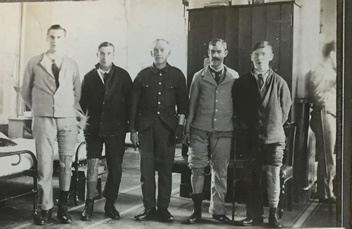
Photographs of the limb workshop and soldier patients at Edenhall Hospital, c.1910s (GD52/4/2)
However, apart from soldiers, there were few, if any, prostheses' services for the civilian population until after the Second World War. Bioengineering was not viewed as a legitimate medical discipline within the newly-formed National Health Service. This changed during the early 1960s, when the thalidomide tragedy occurred in Britain and other parts of Western Europe. Thalidomide was a drug that was first licensed for use in the UK in 1958 and was advertised as a mild sleeping pill for pregnant women. In 1961, it was realised that there was a link between the thalidomide drug and the increase in births of children with physical impairments. Many children were born with severe limb deficiencies or had no limbs, with the effect being often bilateral – affecting either both arms or legs. In Scotland, around 100-150 children were affected and 20-30 of these children had severe disabilities as a result.
This sparked an emotionally-charged campaign to provide treatment for these children. In May 1963, the Scottish Home and Health Department funded the creation of The Powered Prosthetics Unit, a small workshop dedicated to making artificial limbs for children affected by thalidomide located near the Edinburgh University George Square campus and the old Royal Infirmary building, now Quartermile. This space was eventually too small and it moved to the Princess Margaret Rose Hospital in 1965, opening a Self-Care Unit for the children to stay with their families when receiving long-term therapy and treatment the following year. In 1969, it was renamed The Bio-engineering Centre. Although it mysteriously dropped the hyphen in the 1980s and has changed locations multiple times over the last decade (it moved to the Eastern General after the PMR closed in 2002 and the SMART Centre at Astley Ainslie Hospital in 2007), it has kept this name.
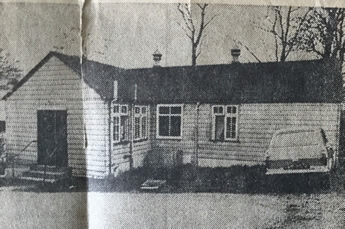
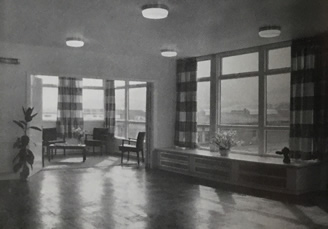
A photograph of the Powered Prosthetics Unit, A photograph of the interior of the Self-Care Unit
early 1960s (Acc10/001) before it opened in 1966 (Acc10/001)
Since the Powered Prosthetic Unit opened, Edinburgh has been a major innovator in bioengineering technology. Professor David Simpson, who helped to open the Unit and was the first Director of the Bioengineering Centre, designed pneumatic (gas) powered prostheses that used his extended physiological proprioception (EPP) theory, making the prosthesis feel more natural to the user. Simpson also made a Low Pressure Airbed that prevented patients who had long rest periods from getting bedsores. It was used both in hospitals and for home use, and was sold commercially well into the 1990s.
In the 1980s technological advancements meant that artificial limbs could be electrically powered, and so the team at the Centre began to develop the first electrically powered hand in collaboration with REACH, a charity for children with upper limb deficiencies, and fitted it for the first time on an adult a decade later. In 1998, the Edinburgh Modular Arm System (EMAS), the world’s first ever electrically powered arm with a powered shoulder, elbow, wrist and fingers, was fitted at the Bioengineering Centre.
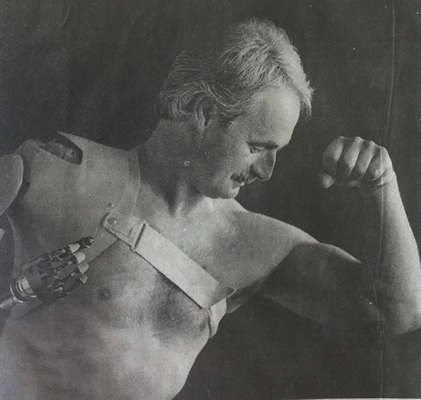
Photograph of Campbell Aird, the first person to be fitted with the EMAS, 1998 (Acc10/001)
In 2001, bioengineer David Gow founded the private company Touch, later TouchBionics. This company that created and launched the i-limb hand, the first artificial hand in the world to have independently powered digits, in 2007. TouchBionics is now owned by Ossur, an Icelandic prosthetics and orthotics company, and there have been several developments to the i-limb hand since, but this Edinburgh invention continues to have a monopoly over the prostheses market.
For more information about the bioengineering industry in Edinburgh, please view our online resource here.
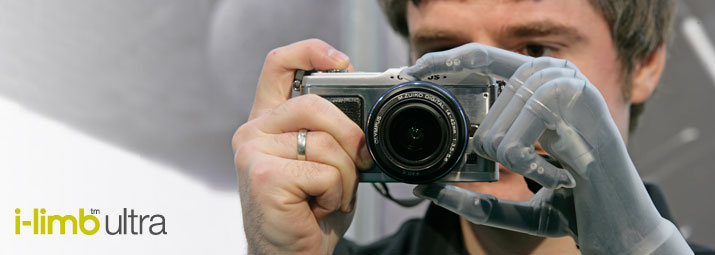 |
Photograph of a man holding a camera whilst using the i-limb ultra, 2010s. Image by kind permission of Össur. |
Designed by the Learning Technology Section, © The University of Edinburgh

